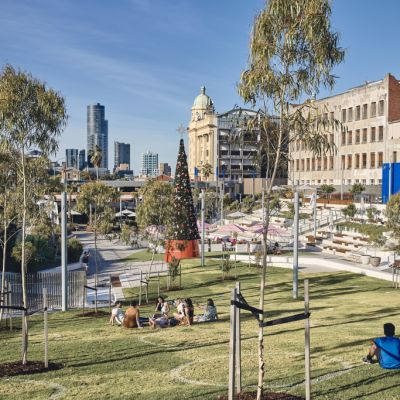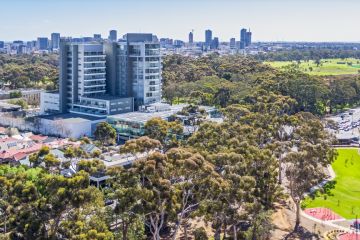The suburbs where home owners can’t afford their mortgages now
Outer suburbs in Melbourne and Sydney now dominate a list of postcodes where home owners are behind on mortgage payments, in a reversal from five years ago when Western Australia comprised the bulk of the list.
But some experts think arrears rates across the country may improve as interest rates start to fall.
At the end of March, five of the 10 suburbs that had the highest level of home-loan arrears were in Victoria and four in NSW. These included relatively affordable mortgage-belt pockets, such as Victoria’s Craigieburn, Caroline Springs, Narre Warren, Pakenham and Melton South, plus Sydney’s Blacktown, Liverpool and Campbelltown.
Queensland had only one postcode featured in the latest S&P Global Ratings list of the 10 worst-performing postcodes.
At the same time five years earlier, seven West Australian suburbs were among the worst 10, one each from NSW, Queensland and the Northern Territory, and none from Victoria, according to S&P.
Households across Australia have been fending off financial pressure prompted by falling real incomes and high inflation. The Reserve Bank of Australia, in its most recent Financial Stability Review issued in April, said the share of mortgagors falling behind on their loan repayments rose in every state and territory over recent years, from low levels in 2022.
The earlier higher arrears performance in WA was a byproduct of the “post-mining boom legacy” and the way it affected property markets, said S&P director Erin Kitson.
“Because property markets were very lacklustre in WA for a long time following the mining boom, borrowers couldn’t voluntarily sell property to get their way out of longer-dated arrears, so that kept them in longer-dated arrears,” she said.
“What we saw happen, though, in about mid-2023 was arrears start to fall in Western Australia.”
Strong growth in WA’s property markets compared to other parts of the country in recent years and a stronger economy “really helped bring arrears down there quite quickly because it has meant that borrowers now could voluntarily sell properties”, Kitson added.
Tim Lawless, head of research at Cotality (formerly CoreLogic), said the WA market had been strong, with housing values rising a little over 80 per cent in five years.
“It’s been extraordinary. So that’s really helped to see the marketplace move away from its history of high arrears,” he said.
In NSW and Victoria, the arrears trajectory has looked different since lockdowns battered sentiment.
This was particularly so in Melbourne where housing values are still 3.9 per cent below peak levels, on Cotality data.
No Victorian postcodes featured in S&P’s top 10 list in March 2020, and the regional NSW town of Appletree Flat, over 200 kilometres from Sydney, was the only entrant from that state.
For the past three quarters, Craigeburn about 30 kilometres from the Melbourne CBD, was the worst performing suburb, with 3.10 per cent of home owners behind on their repayments by March.
More than 2 per cent of home owners were behind on their repayments in several suburbs by March.
For around 18 months, Kitson said, outer Sydney and Melbourne postcodes had appeared more frequently in S&P’s top 10 list.

“This is often where, particularly younger households need to move to be able to afford a property. And that means that debt to income levels in these areas can often be more stretched, making households more vulnerable and sensitive to high interest rates,” she said.
“So, when we saw higher interest rates starting to occur, arrears increased faster in those types of areas.”
According to the RBA’s April report, loan-arrears increases had been most significant in Melbourne and across regional Victoria, partly reflecting the fact that a “higher share of borrowers in Victoria have both larger loan sizes and smaller cash buffers than other states”.
Victoria had retained the top spot for the nation’s highest arrears in March, reaching 1.17 per cent, followed by NSW with 1.07 per cent in arrears, S&P found. WA arrears were 0.86 per cent for the same period.
But a shift in arrears levels could be on the horizon, against the backdrop of interest rate cuts, relatively low unemployment and slowing inflation. The Reserve Bank’s next interest rates decision is on Tuesday.
There was the potential for arrears to reduce nationwide, but at different rates depending on local factors, said Kitson.
Cotality’s Lawless said that while any fall in arrears rates would take time to appear in data, he “wouldn’t be surprised if we’re probably either approaching, or at the peak of arrears rates”.
In its April report, the RBA said that “loan arrears have stabilised across all states, and, except for Victoria, are either around or lower than pre-pandemic levels.”
We recommend
States
Capital Cities
Capital Cities - Rentals
Popular Areas
Allhomes
More
- © 2025, CoStar Group Inc.










